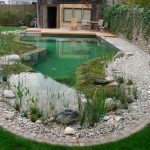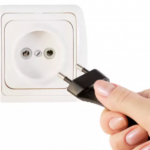Steel water pipes are most often connected by means of a thread, which is very difficult to seal and seal. However, a process is necessary to avoid leaks.

Varieties of threaded connections
Various threaded joints are used in different sections of steel pipes, among them:
- Connections of sections - couplings with an internal thread of the same diameter on both sides are used.
- Transition between different diameters. Reducing couplings are used with internal threads of different diameters or parts with internal and external threads of different diameters.
- Bend connection - 90 degree elbow fittings are used.
- Branch and branching - tees, crosses are used.
- End of pipe - plugs are used: plugs and caps.

How and how to seal the pipe
There is always a gap between the pipe and fitting that is not visible to the eye, but water flows quietly through it. Between the cast-iron parts and the pipe, the slots reach sizes up to 1 mm.

The most common way to seal a threaded connection is to use a gasket and union nut. Often this pair is used in the work of attaching a mixer or gas column to the pipeline. The pipe of the connected object must be without thread, flared. A cap nut is put on it, the gasket is located between the pipe and the device. After the connection is established, the nut is tightened. If you apply too much force, the gasket material will tear on the thread, the connection will not be considered leakproof.

The advantage of the connection is that water does not come into contact with the thread, thus preventing corrosion. It is easy to remove the nut and replace the gasket, which is inexpensive. But the use of such a connection is not possible everywhere, since the process requires tube expansion.

For standard compounds, flax seals are most often used. For this, household linen threads are taken, which can be purchased on the plumbing market. A good material should be elastic, with thin threads, odorless and no specks. Flax on its own is not suitable for sealing compounds, since it constantly rots and does not protect steel from corrosion when it is in constant contact with water. Therefore, it is impregnated with protective pastes, for example, drying oil or lead minium.



Pasta is prepared on its own. For this, drying oil and lead red lead are taken, bred to a thick consistency. The composition should not give smudges and at the same time should be easily smeared into a thin layer.

-
 How to close the space between the bathroom and the wall
How to close the space between the bathroom and the wall
-
 Is it possible to fix the creaky floor
Is it possible to fix the creaky floor
-
 Stainless Steel Bends
Stainless Steel Bends
-
 Interesting facts about self-tapping screws
Interesting facts about self-tapping screws
-
 What mistakes make a reverse osmosis system useless
What mistakes make a reverse osmosis system useless
-
 The optimal height of furniture in the apartment
The optimal height of furniture in the apartment
-
 The most common mistakes when arranging a pond on a site
The most common mistakes when arranging a pond on a site
-
 By hiring repair crews, you can get fooled
By hiring repair crews, you can get fooled
-
 What kind of people make mistakes when choosing the sizes of a shower cabin
What kind of people make mistakes when choosing the sizes of a shower cabin
-
 What to do if wallpaper glue dries too fast
What to do if wallpaper glue dries too fast
-
 Flush Detector
Flush Detector
-
 Why does the socket not let in the plug of the appliance?
Why does the socket not let in the plug of the appliance?
New publications are published daily on our channel in Yandex. Zen
Go to Yandex. Zen


